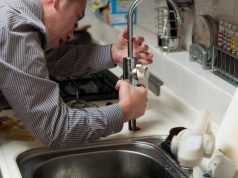Pyrex is a household name for reliable kitchenware, but when using it in the microwave, questions often arise regarding its safety. Can you put Pyrex in the microwave without risking accidents or damage? This comprehensive guide aims to answer that question and provide essential insights into safely using Pyrex in your microwave oven. By understanding the properties of Pyrex, microwave basics, and following recommended guidelines, you can harness the convenience of Pyrex cookware while keeping your kitchen safe and your food delicious.
Can You Put Pyrex In The Microwave?
Yes, you can put Pyrex in the microwave, but there are some important considerations to remember. First, ensure that your Pyrex container is labeled as microwave-safe. Not all Pyrex products are, and using the wrong one can lead to shattering or damage. Secondly, be cautious of extreme temperature changes. Gradually heating or cooling your Pyrex in the microwave is safer than subjecting it to sudden shifts in temperature. Follow these guidelines, and you can safely use Pyrex in the microwave for reheating and cooking your favorite dishes.
Common Usage Of Pyrex In The Kitchen
Pyrex is a versatile and popular kitchenware material known for its durability and functionality. Common uses of Pyrex in the kitchen include:
Baking: Pyrex bakeware, including baking dishes, pie plates, and muffin pans, is widely employed for baking a myriad of dishes. Whether you’re making lasagnas, casseroles, brownies, or fruit pies, Pyrex’s even heat distribution and resistance to high temperatures ensure consistent and perfect results.
Roasting: Roasting pans made of Pyrex are commonly used for roasting meats, poultry, and vegetables. They provide a sturdy surface that can withstand high temperatures, helping achieve succulent and evenly cooked roasts.
Food Storage: Pyrex glass containers with secure lids are a preferred choice for storing leftovers and meal prep. Unlike plastic containers, Pyrex doesn’t leach chemicals into your food, making it a safer option. Plus, these containers can seamlessly transition from the refrigerator to the microwave or oven.
Microwave Heating: Many Pyrex containers are labeled as microwave-safe, making them a convenient choice for heating or reheating food quickly. The transparency of Pyrex allows you to keep an eye on your food as it heats, preventing messy microwave mishaps.
Mixing And Measuring: Pyrex mixing bowls are a kitchen workhorse used for combining ingredients in baking and cooking. Some Pyrex measuring cups feature clear markings, ensuring precise recipe measurements.
Serving: Pyrex dishes can go from the oven or microwave to the dining table. Their versatility makes them ideal for serving dishes like baked pasta, soups, and side dishes, saving you from using multiple serving dishes.
Freezing: Pyrex glass can withstand low temperatures, making it suitable for freezing foods. Pyrex freezer-safe containers are commonly used for storing items such as soups, stews, and sauces that you want to preserve for an extended period.
Dessert Making: Pyrex pie plates and ramekins are often employed for making and serving desserts like fruit pies, crème brûlée, and custards. Their heat-retaining properties contribute to achieving the perfect texture in your desserts.
Guidelines For Using Pyrex In The Microwave
Using Pyrex in the microwave is convenient, but it’s important to understand and follow specific guidelines to ensure both the safety and longevity of your Pyrex cookware. Here’s a comprehensive set of guidelines for using Pyrex in the microwave:
Check For Microwave-Safe Label:
Always verify that your Pyrex container is labeled as microwave-safe. This label indicates that the glass has been designed and tested to withstand microwave use. Not all Pyrex products are microwave-safe, so it’s essential to confirm this information.
Avoid Sudden Temperature Changes:
Pyrex is sensitive to rapid temperature fluctuations, which can lead to breakage. To prevent thermal stress, avoid placing cold Pyrex directly into a hot microwave or vice versa. Instead, gradually heat or cool it by letting it reach room temperature before using it in the microwave.
Use Microwave-Safe Covers:
When covering your Pyrex container in the microwave, opt for microwave-safe lids or covers. These should be designed to allow steam to escape, preventing pressure buildup that could cause the lid to pop off or the glass to shatter.
Reheating And Cooking Techniques:
Consider recommended techniques when reheating or cooking in Pyrex. Stirring your food periodically can help distribute heat evenly and prevent hotspots, ensuring that your dish heats uniformly.
Proper Lid Placement:
If using a microwave-safe lid or cover, ensure it’s appropriately positioned on top of the Pyrex container. This not only helps retain moisture in the food but also prevents splatters in your microwave.
Heating Liquids With Caution:
When heating liquids in Pyrex, exercise extra caution. Glass can be prone to superheating, where liquids appear calm but can boil over suddenly when disturbed. To avoid this, place a microwave-safe utensil, such as a wooden stir stick or microwave-safe stirrer, in the container when heating liquids. This breaks the surface tension and reduces the risk of sudden boil-overs.
Avoid Overheating:
Overheating Pyrex can cause it to crack or shatter. Follow the recommended cooking times and power levels for your microwave. If unsure, it’s better to heat your food in shorter increments and check for doneness rather than using high power for an extended period.
Check For Damage:
Before using Pyrex in the microwave, carefully inspect it for any visible damage or cracks. Damaged glassware is more likely to break when subjected to microwave heat, so it’s essential to ensure your Pyrex is in good condition.
Mind Metal Trim:
Some Pyrex dishes may have metal trim or decorations. Avoid putting these in the microwave, as metal can cause arcing and damage to the microwave oven. Always choose Pyrex containers with microwave-safe designs.
Tips For Safe Microwave Cooking With Pyrex
Safe microwave cooking with Pyrex is not only about convenience but also about ensuring that your kitchen experience is free from mishaps. Here’s an in-depth look at various tips and best practices to help you achieve safe and successful microwave cooking with Pyrex:
- Start by verifying that your Pyrex cookware is explicitly labeled as microwave-safe. This label indicates that the glass has been designed, tested, and approved for microwave ovens. Only use Pyrex with this designation to minimize the risk of breakage or damage.
- When covering your Pyrex container in the microwave, always use microwave-safe lids or covers. These specialized covers allow steam to escape, preventing pressure buildup that could cause the lid to pop off or the glass to shatter.
- Placing a microwave-safe plate or paper towel under your Pyrex container serves a dual purpose. It helps catch any spills or splatters, keeping your microwave clean, and it aids in distributing heat more evenly, reducing the chances of overheating.
- To ensure even cooking, stir your food periodically during microwave heating. Additionally, consider rotating your Pyrex container, especially when heating dense or thick dishes. This practice helps prevent hotspots, ensuring uniform heating.
- Familiarize yourself with your microwave’s user manual, which guides appropriate power levels and cooking times. In general, using lower power settings for longer durations is preferable to avoid overheating and to achieve consistent cooking.
- After microwaving, allow your food to stand in the Pyrex container before removing it. This resting time serves two purposes: it helps distribute heat more evenly throughout the dish and allows any residual cooking to occur without risking burns when handling.
- Pyrex containers can become extremely hot in the microwave, making oven mitts, kitchen towels, or microwave-safe gloves essential for safe handling. Always use these protective items when removing Pyrex from the microwave to prevent burns or injuries.
- Keep an eye on your food while it’s in the microwave. Pyrex’s transparency allows you to assess the progress of your dish, helping you avoid overcooking or overheating.
Warping Up
Pyrex is a versatile and reliable kitchenware material that can be safely used in the microwave following the appropriate guidelines. By ensuring that your Pyrex is labeled as microwave-safe, using microwave-safe lids or covers, and employing techniques like stirring, rotating, and following recommended cooking times and power levels, you can enjoy the convenience of microwave cooking without compromising safety or the quality of your dishes. It’s essential to handle hot Pyrex carefully, use protective items like oven mitts or kitchen towels, and monitor the cooking process to prevent overcooking or overheating. Additionally, taking precautions when heating liquids and minimizing food splatters can help maintain a clean and hassle-free microwave cooking environment.
FAQ’s
What Happens If You Microwave Pyrex That Is Not Labeled As Microwave-Safe?
Microwaving Pyrex that is not labeled as microwave-safe can lead to thermal stress and potentially cause the glass to crack or shatter. It’s important to use the right Pyrex products to avoid this risk.
How Do I Know If My Pyrex Is Microwave-Safe?
Look for a microwave-safe label on your Pyrex product. Manufacturers typically label their products as microwave-safe if they have been tested and approved for microwave use. If in doubt, refer to the product’s packaging or contact the manufacturer.
What Should I Do If My Pyrex Cracks Or Shatters In The Microwave?
If your Pyrex cracks or shatters in the microwave, immediately turn off the microwave, use oven mitts to handle the hot glass carefully and discard the contents safely. Dispose of the damaged Pyrex properly.





















